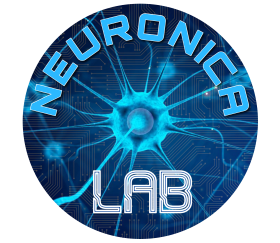Energy consumption is a key asset of industrial facilities especially with regard to its optimization. The energy cost is continuously increasing also due to external worldwide factors. Moreover, consuming less energy means reducing the impact on the environment.
In this context, an advanced energy management strategy represents a fundamental tool for effectively reducing the mismatch between the actual and the expected energy performance.
The proposed approach combines traditional energy domain knowledge with IoT sensors data and novel machine learning techniques to build an effective daily decision-making system for energy management. In this framework, advanced solutions such as energy consumption and load forecasting, anomaly detection and diagnosis, and fault prognosis are implemented to obtain systematic energy saving.
The research aims to bring a significant advancement of knowledge in the PNRR areas of interest, in particular with regard to Key Enabling Technologies. In addition, the research has a strong transversal approach between topics related to artificial intelligence and those related to smart monitoring and energy management.
The project is composed of multiple parts, as follows.
1. Advanced photovoltaic power production and energy load forecasting
Recent years have seen a rise in the importance of renewable energy sources due to the advantages they provide, in terms of the preservation of the environment and inexhaustible supply of energy. In particular, photovoltaic (PV) energy will be prioritized in the future and it is expanding worldwide. However, the high variability of solar irradiance and, consequently, of PV power generation causes uncertainty in the planning and operation of power systems. Thus, the forecasting of PV power generation is crucial to solve this issue. LSTM-based methods were compared for the 6-hour-ahead and day-ahead forecasting of PV power generated by a PV power station, based on the Global Horizontal Irradiance and the air temperature forecasts of the same period.
Secondly, research and development of a deep learning algorithm for predicting the energy loads of a microgrid are being carried out in collaboration with Università degli Studi di Palermo.
Acknowledgement
The European Union – NextGenerationEU (DM 352/2022) and Trigenia S.r.l. are acknowledged for funding.
2. Optimization of CHP and energy storage utilization in large power plants
Large process plants generally require energy in different forms: mechanical, electrical, or thermal (in the form of steam or hot water). A commonly used source of energy is cogeneration, also defined as Combined Heat and Power (CHP). Cogeneration can offer substantial economic as well as energy savings; however, its real-time operation scheduling is still a challenge today. Multiple algorithms have been proposed for the CHP control problem in the literature, such as genetic algorithms (GAs), particle swarm optimization algorithms, artificial neural networks, fuzzy decision making systems and, most recently, reinforcement learning (RL) algorithms. The comparison of a RL approach and a GA for the control of a cogenerator was performed, using as a case study a thermal power plant serving a factory during the year 2021. The two methods were compared based on an earnings before interest, taxes, depreciation, and amortization (EBITDA) metric. The EBITDA that could be obtained using the RL algorithm, exceeds both the EBITDA that could be generated using a per-week genetic algorithm and the one from the manual scheduling of the CHP. Thus, the RL algorithm proves to be the most cost-effective strategy for the control of a CHP.
In addition, the development of a deep learning algorithm for the optimized utilization of energy storage in a large-scale power plant including several sources of electricity is currently underway.
Acknowledgement
The European Union – NextGenerationEU (DM 352/2022) and Trigenia S.r.l. are acknowledged for funding.
3. Enhanced Neural real-time digital TWIN for Electrical Drivers (ENTWINED)
A detailed description of the project is reported in page Enhanced Neural real-time digital TWIN for Electrical Drivers (ENTWINED).
